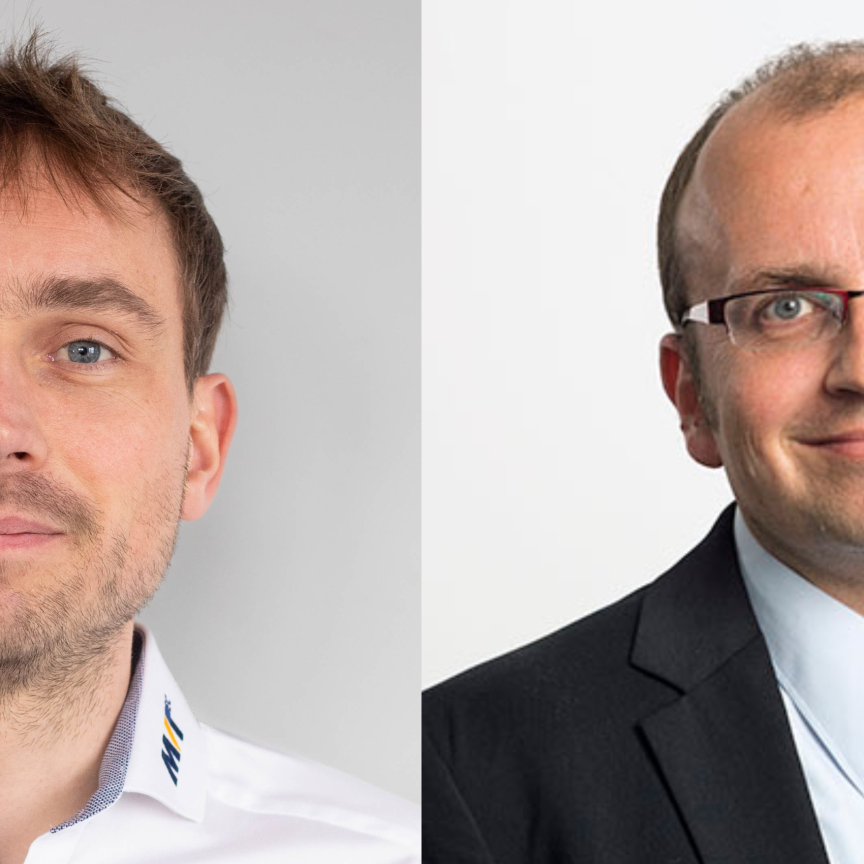A 3D dental scanner developed by the Austrian Institute of Technology (AIT) has won the Vision Award, presented each year at the Vision show in Stuttgart, Germany. The scanner, which is being commercialised by a-tron 3D, generates a 3D digital model of a patient's teeth with an aim to replace silicone impressions and plaster models that are traditionally used.
The award and €5,000 prize money was presented to Dr Manfred Gruber, head of the Safe and Autonomous Systems business unit at AIT, by Warren Clark, publishing director at Imaging and Machine Vision Europe, during an award ceremony at Vision Stuttgart on 8 November. IMVE magazine sponsors the award.
The intraoral scanner uses stereo vision to generate a 3D point cloud. It utilises AIT's high speed stereo matching engine S³E, which is fast enough for real-time scanning and reliable enough for highly accurate measurements.
Dental impressions are traditionally made using various casting compounds. The patient is asked to bite into a form filled with casting mass, which creates the impression of the patient's teeth. This is then used by dental laboratory technicians to produce implants as well as other applications requiring a dental impression.
However, the process is complex and longwinded, and making the impression with the plaster compound can be uncomfortable for the patient.
'Our intraoral 3D scanner works contact- and spray-free,' commented Dr Gruber, speaking to Imaging and Machine Vision Europe. 'The size of the tool holder of our scanner is significantly smaller than the size of the available products. This is an important advantage, because a handy device is much easier to use for the dentist and is more convenient for the patient as well. The shape of the tool holder is inspired by a dental drill, a tool dentists are really familiar with and makes it easy to handle.'
The stereo camera system repeatedly captures a fragment of the teeth's surface and the stereo software calculates its exact 3D representation. To yield an entire 3D reconstruction of several teeth, all individually captured 3D point clouds have to be transformed into one common 3D coordinate system. This process is called 3D registration and is calculated in real-time during the actual scan process and permits a continuous live visualisation of the entire scan process. A new 3D point cloud is continuously registered onto the 3D scene reconstruction previously computed, so the dentist has visual feedback and ensures that the scanned 3D model is complete and suitable for further processing.
Dr Gruber noted that a serious challenge with developing the scanner is imaging the monotone and textureless character of the teeth's surface. 'Due to the fact that our stereo matching algorithm has to determine a dense 3D point cloud and we cannot assume any predefined shapes or models, each pixel of the captured images has to be matched individually,' he said.
The dental scanner integrates an LED pattern projector, which uses a random dot pattern to illuminate the teeth with structured light. Neither the exact appearance of the pattern, nor the exact alignment of the projector relative to the cameras influences the accuracy of the measurement. This makes the system very robust against mechanical tolerances and thermal stress, and once calibrated, the accuracy is retained for the life of the scanner.
'The light source and its wavelength are well chosen to project the pattern directly onto the surface of the teeth,' explained Dr Gruber. 'This is not trivial, because standard light from LEDs penetrates a bit the tooth enamel and, thus, unpredictably falsifies the 3D measurement.'
The data from the scanner is in standard data formats, which can be handled by all dental labs around the world.
'The award is definitely one of the highlights of our computer vision activities,' commented Dr Gruber. 'It backs our strategic research and development programme and helps us to establish AIT as a leading international centre for computer vision.'
A-tron 3D will commercialise the scanner and is planning to launch it in 2012.
The jury, comprised of Jens Michael Carstensen of Videometer, Hermann Tropf of Vision Tools, Martin Wäny of Awaiba, Dieter-Josef Walter of Daimler, and Michael Engel of Vision Components, also recognised Fraunhofer Institute for Integrated Circuits as runner up for its PolKa solution for analysing polarised light, with Heliotis' 3D sensor in third place.


